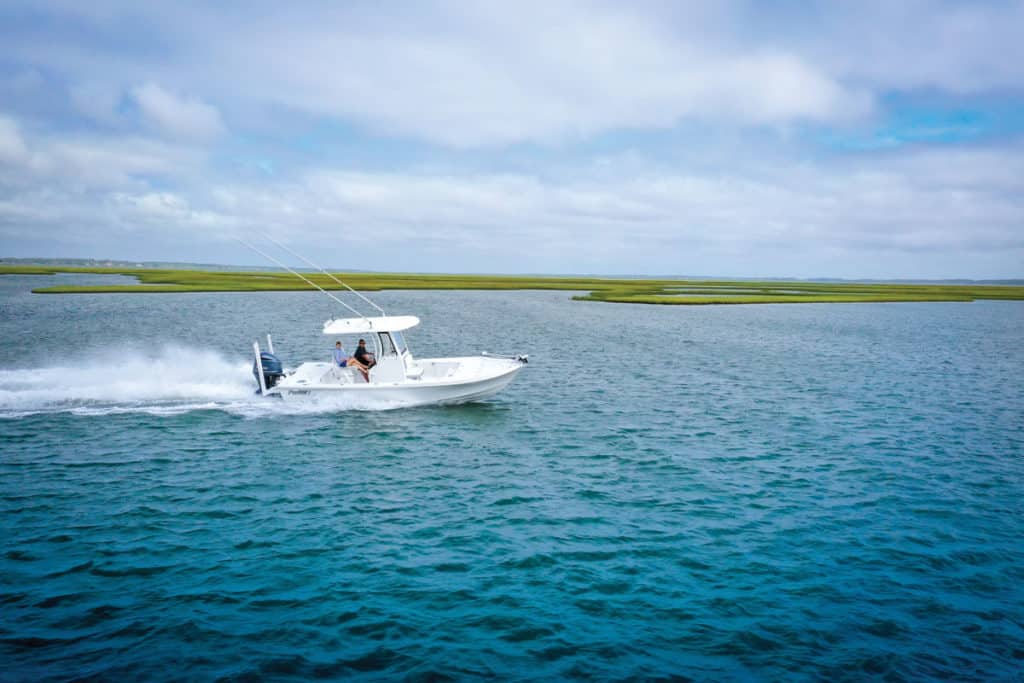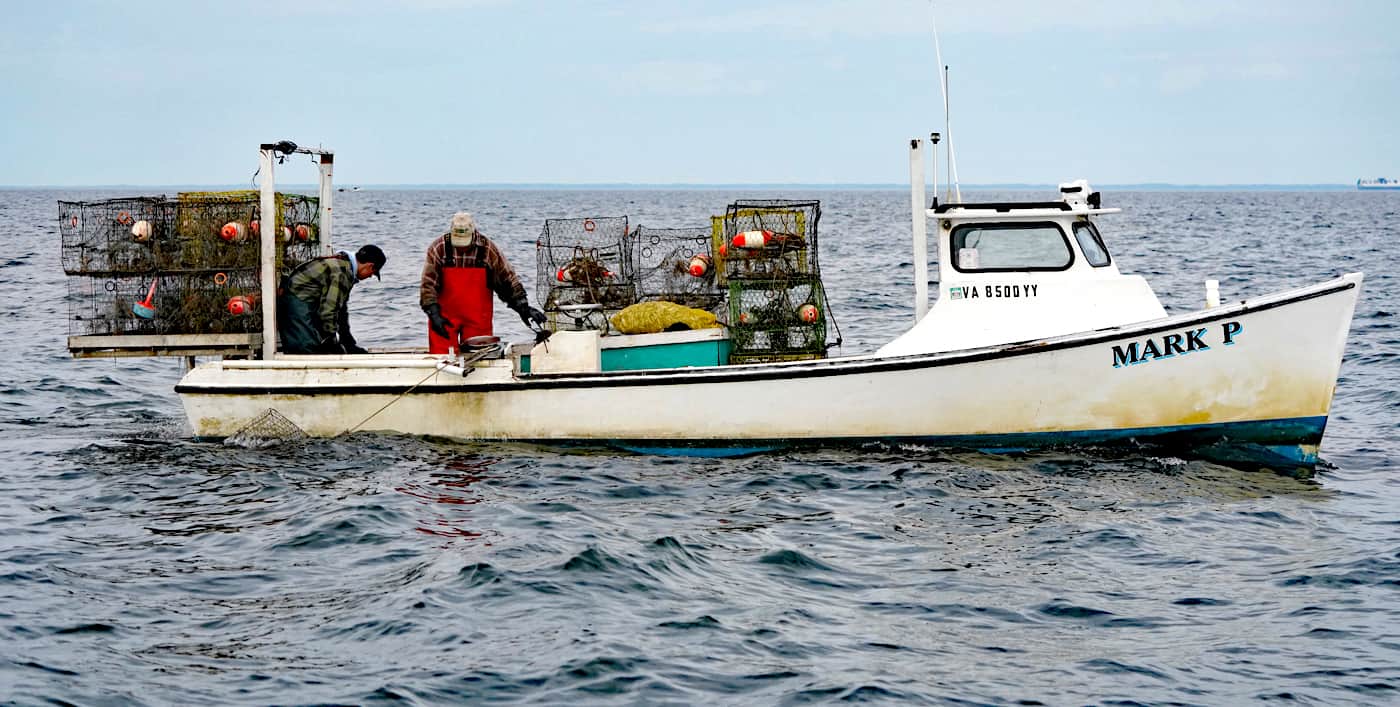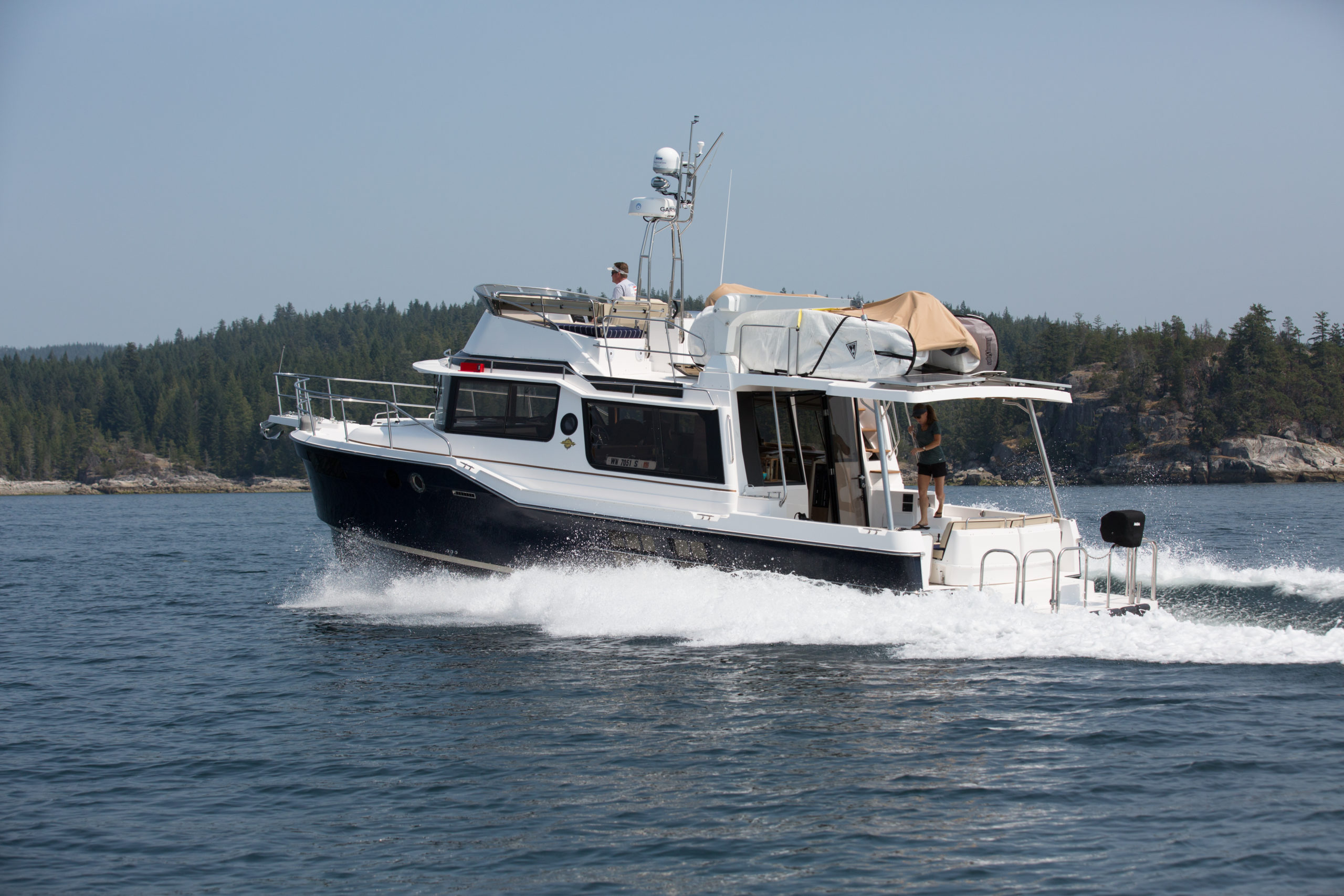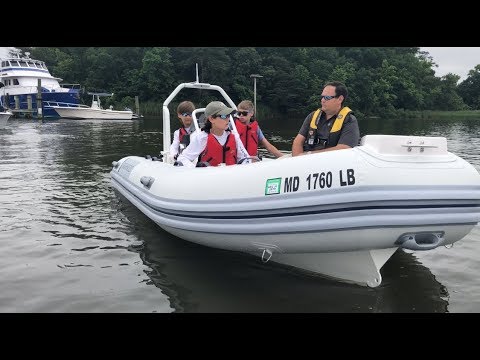Parker Boats’ new 26-foot sport hybrid is just the thing.
Solid boat sense comes from hands-on experience, and Linwood Parker has plenty of that.
Parker 26SH
LOA: 26′ 6″
Beam: 9′ 6″
Draft: 15” (engine up)
Weight: 5,073 lbs.
Max HP: 400
Fuel Capacity: 97 gal.
MSRP: starts at $125,751
It matters in boat design, which has always been a blend of art and engineering. Parker’s new 26SH (sport hybrid) is a good example—a sweet-looking bay boat that will serve families well while being certain to meet the needs of anglers up and down the Chesapeake.
Parker grew up around boats and boatbuilders on North Carolina’s Harkers Island in the 1950s, a time when boys who wanted skiffs built their own. He worked on the water and in the boatyards before and during college. Afterwards, he spent time drafting the lines of the local vessels, which were traditionally built by “rack-of-eye” without drawings. He worked on sportfishing boats and he built shrimp trawlers. He knew what worked through hands-on experience by designing and building boats, and fishing in his notoriously rough home waters.
By the 1970s, he saw that fiberglass was taking over the market while increasingly reliable outboards became the preferred power for inshore watermen. His first model, the 25-foot Sou’wester, was a simple, seaworthy, and reasonably priced skiff with unmistakable Carolina sheer and bow-flare, and a shallow-V running surface, which flowed forward to a sharp, wave-cleaving forefoot. We remember when a Crisfield-based boat dealer introduced the Sou’wester to Tangier Sound where it quickly set a new standard, and the rest is history.
Watermen, guides, anglers, state fishery agencies, university laboratories, and natural resource law enforcement officers became enthusiastic customers for a line of Parkers, which grew to include nineteen models from 18- to 28-feet, including center-consoles, sport-cabins, walkarounds, and a dual-console design.
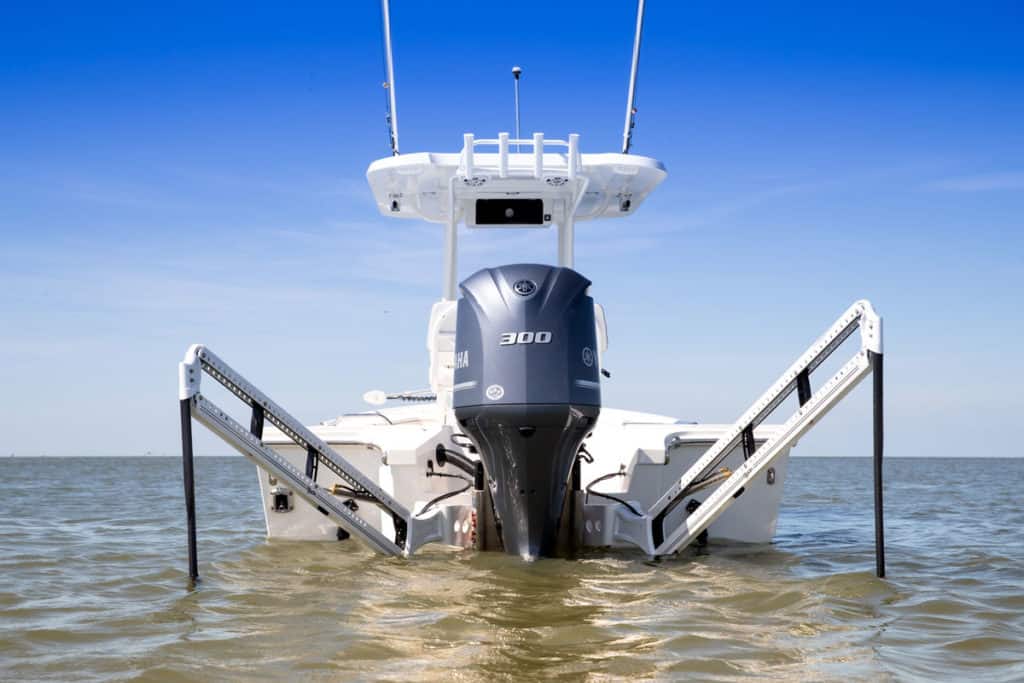
The model mix has evolved over the years, based on customer requests, advances in materials, and improvements in construction processes, but it still hews to the tagline, “Everything you need, nothing you don’t.” The concept for the 26SH goes back to the 1990s, when Linwood visited a prospective dealer on the Texas Gulf Coast where anglers love to wade the barrier islands surf and the shallow lagoons in search of speckled trout, redfish, and flounder. Strength, simplicity, and seaworthiness are important there, but so is a low freeboard aft to allow anglers to easily slide overboard to wade the flats and to climb back in.
With Carolina-style bows and self-bailing cockpits, these “bay boats” could handle the open seas and still serve their shallow-water purposes. The first Parker bay boats were inexpensive and plain in 21-, 23-, and 25-foot sizes. Professional fishing guides loved them, and the boats spread east to Louisiana, Mississippi, Alabama, and the Florida Panhandle. (We were able to fish one of them ten years ago in the marshes outside Delacroix, Louisiana.) Families also learned that they made great taxis for day-trips to local sandbars.
Over the last few years, Parker and his design team and his dealers sensed “a maturing market for well-appointed bay boats.” He began re-thinking those Gulf-Coast hulls, envisioning a new model that could fish well but also provide comfortable accommodations for family excursions, tow-sports, and swimming. Thus, the 26SH. Her nine-and-a-half-foot beam, a hull deadrise that flows from 18 degrees at the transom to a sharp forefoot, the Carolina bow flare, sharp lifting strakes, and double chines that turn up gradually to follow the sheer, provides a rock-stable hull at rest that lifts easily onto plane at speeds in the low teens, throwing spray out flat to the side. The hull is deep and roomy enough to provide space in the console for adults to change clothes or use a portable head. It also offers secure space to mount up to five batteries— one for the engine, one for the house, and three for an optional, 36-volt, bow-mounted, trolling motor, which keeps the total battery weight of about 300 pounds centered low in the hull.
The standard Yamaha F300 comes bolted to a hydraulic jackplate fastened to a transom motor pod, which allows the 26SH to run in shallow water. In our sea trial, courtesy of Parker Boats and Dare Marina & Yacht Sales, the engine matched the 5,000-pound hull well and provided efficient cruise speeds of 23 to 27 knots and a top end of 40 knots with plenty of power to spare for towing and carrying a full crew. The 97-gallon fuel tank provides a conservative range of 200 nautical miles. For our lower Bay test run on a gray February day, Linwood’s daughter, Robin, who handles marketing for the company, wished us “snotty seas out there to show what the boat can do.” Unfortunately, the Chesapeake was calm, but the hull is clearly capable of handling any Chesapeake seas that a prudent skipper would take her out in. As Linwood said in a phone conversation, “It’s all in how you use the boat. She’s got a nice bottom and enough weight to ride well. The rising sheer and the flare mean the bow can’t go down into a sea without creating resistance. The flare peels water off, increasing buoyancy.”
Above the waterline, in the Parker tradition, the 26SH’s accommodations are simple but ample with a sturdy T-top and a three-panel windshield integrated with the console to provide shelter at the helm, which comes with a compass, a choice of 12- or 16-inch Garmin displays, an interconnected VHF, and a Fusion stereo. Comfortable seating includes room for two forward of the console with a cooler beneath, two more at the helm-seat/leaning post, and two more on a fold-down seat in the center of the stern deck. The broad bow deck offers plenty of room to spread out a picnic. The two decks provide ample storage, including lockable horizontal racks for six fishing rods up to seven-feet long in the port and starboard bow compartments. It’s worth noting that Parker takes storage seriously: the compartments have lights, and the hatches have stout hinges, gas shocks, and gaskets with drain gutters.
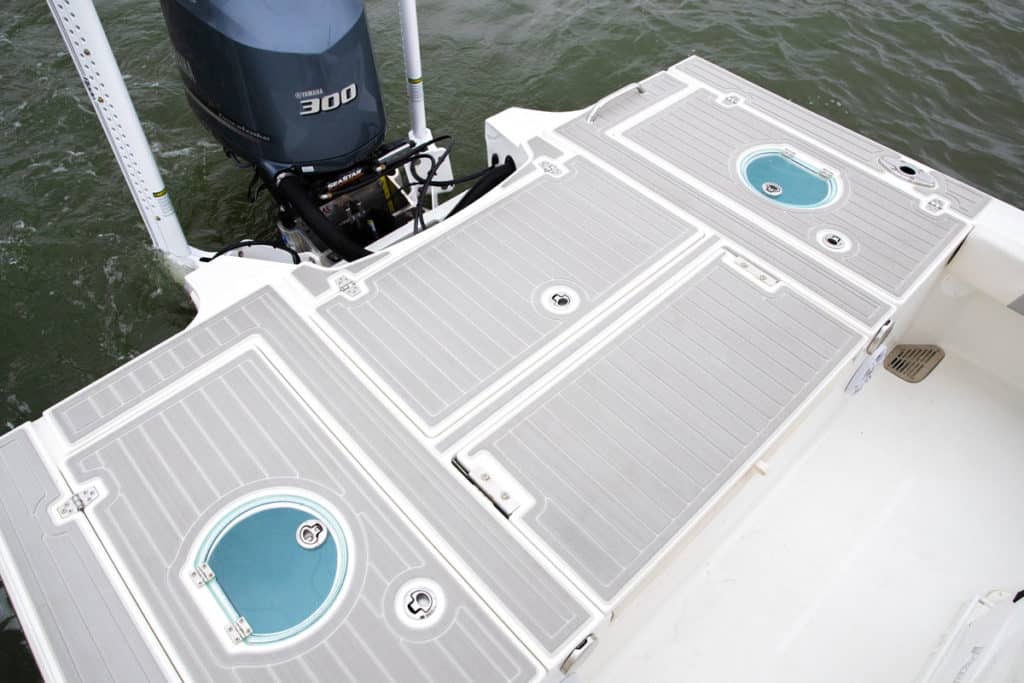
To ensure the boat self-bails at rest, the deck is crowned about an inch in the center, with scuppers at the sides of the cockpit three inches above the waterline. The scuppers are covered with stainless grates to prevent clogging, and their pipes are covered by one-way flaps at the transom.
Even with the 26SH’s low freeboard, the hull’s interior provides 19 to 21 inches of cockpit depth with padded bolsters inside the gunwales for bracing.
The console has horizontal racks for four seven-foot rods on each side. Under the gunwales areracks for four, seven and a half-foot rods, and there are padded, foam fish rulers against the sides to protect your reels. Also beneath the gunwales are two tilt-out storage bins. The leaning post features a pair of tackle drawers with a slide-out cooler beneath.
The aft deck area houses a livewell and a double seat with a storage bin in the center. Both lift out to provide excellent access to the well-organized bilge, which includes a sea chest to serve the live wells. A raw-water washdown system is standard. A freshwater system and shower wand are optional. At the transom, the jackplate has mounts for a pair of optional Power-Pole shallow-water anchors. There’s also a retractable ladder, which helps make the boat a happy swim platform.
Sport Hybrid? Yes, this 26-footer can serve multiple assignments with flare and style, and with her stout construction, she’ll do that for a long time. Parker Boats has another winner.

